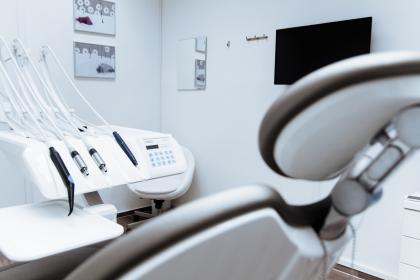Uncovering the Truth: Success Rate of Dental Implants Revealed
Dental implants are a popular solution for tooth loss, but what is their actual success rate? This article explores the success rate of dental implants, factors influencing outcomes, and patient experiences, shedding light on why they are a preferred choice in restorative dentistry.
Understanding the Fundamentals of Dental Implants
Dental implants are artificial tooth roots that provide a permanent base for fixed or removable replacement teeth. Understanding the success rate of dental implants is crucial for patients considering this option. Factors such as the quality of bone, overall health, and the expertise of the dental professional play a pivotal role in determining this success rate. Research indicates that when properly placed, dental implants have an impressively high success rate, often reported between 90% to 95%. However, it's essential to delve deeper to appreciate the nuances behind these numbers. Moreover, the longevity of dental implants adds to their appeal, making them a long-term solution for many dental issues. Therefore, knowing about the success rate of dental implants helps patients make informed decisions about their oral health.
Factors Influencing the Success Rate of Dental Implants
Several factors can impact the success rate of dental implants. A patient's overall health must be evaluated as conditions like diabetes or autoimmune diseases can hinder healing and integration. The quality and density of the jawbone also significantly affect how well an implant will fuse with the bone—a process known as osseointegration. Smoking and poor oral hygiene can further decrease the success rate of dental implants, as they increase the risk of infection and failure. Additionally, the experience of the dental surgeon directly correlates with successful outcomes. Studies show that implants placed by highly skilled professionals tend to have a better success rate compared to those performed by less experienced hands. Ultimately, understanding these influencing factors helps to paint a clearer picture of the success rate of dental implants in clinical practice.
Patient Experiences and Success Rate of Dental Implants
Exploring patient experiences provides valuable insights into the realistic success rate of dental implants. Many patients report satisfaction with their dental implants, citing improved functionality and aesthetics. Anecdotal evidence often supports clinical findings, indicating high levels of success. However, it is important to note that outcomes may vary based on individual circumstances and adherence to post-operative care. Communication between patients and dental professionals is critical for setting realistic expectations concerning the success rate of dental implants. Furthermore, support from dental teams throughout the healing process often enhances patient confidence and satisfaction, correlating with reported success rates post-implantation. Thus, patient narratives contribute to our understanding of the broader implications of implant success.
Evaluating Long-term Success of Dental Implants
Analyzing the long-term success rate of dental implants is essential in assessing their viability as a restoration option. Many studies follow patients for years after the placement of implants, showcasing impressive durability. The success rate of dental implants tends to remain high over time, with most failures occurring within the first year. Regular follow-ups and proper maintenance are key to ensuring the longevity of implants. Factors such as regular dental visits and adherence to oral hygiene practices significantly influence ongoing success rates. Furthermore, patients who undergo any further surgical procedures have different success trajectories compared to those without additional interventions. This contrasts serves to exemplify the variability in the success rate of dental implants based on individual patient circumstances.
Economic Implications Surrounding the Success Rate of Dental Implants
The economic considerations accompanying dental implants cannot be overlooked. Initial costs may deter some patients, yet the high success rate of dental implants often translates to long-term savings in dental care. When considering the need for future dental work, the success rate of dental implants enhances their appeal as a cost-effective solution. Moreover, insurance coverage increasingly accommodates implant procedures, making them more accessible. While the upfront expense is more substantial, the longevity and reliability of dental implants can alleviate future financial burdens. Understanding these economic implications can influence patient decisions by emphasizing the overall value associated with the success rate of dental implants.
Conclusion: The Future of Dental Implants
In conclusion, the success rate of dental implants represents an impressive aspect of modern dentistry. Factors influencing this rate—from the health of the recipient to the skill of the practitioner—need careful consideration. Patient experiences and long-term studies reinforce the notion that dental implants are a durable and aesthetically pleasing solution to tooth loss. While economic factors play a role in decision-making, the continued advancements in technology and materials promise ongoing improvements in the success rate of dental implants. For those contemplating dental implants, making an educated choice based on comprehensive research and discussions with professionals will undeniably contribute to favorable outcomes.
